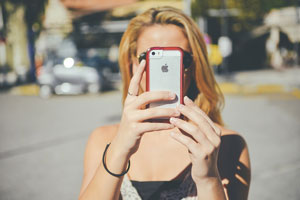40,000 Tinder Photos Stolen to Create Facial Recognition Database
Home Help Center 40,000 Tinder Photos Stolen to Create Facial Recognition Database
You know the saying: “Nothing is ever deleted from the internet, and nothing is ever private.”

The recent news about dating site Tinder is a perfect example. Stuart Colianni wrote a software script that was able to “scrape” more than 40,000 pictures from the site at the push of a button. These pictures had been uploaded by Tinder users, some of them to be used as their profile pictures, and others just to provide more information about them to potential matches.
Colianni uploaded those images to a folder online, then made it available for anyone who wanted to use it. He even established a public domain license, and within the first three days of being available, more than 300 people had downloaded them.
What would possess someone to publicly expose the photos of people with private dating site pictures? In this particular case, it really just comes down to selfish gain. Colianni has been working for some time on an improvement to current facial recognition innovations, and he wanted a collection of faces of people who all live in the same geographic region. The Tinder users he targeted all live in the San Francisco Bay area, and presumably, once his programming “learns” their faces, he can walk the streets in search of these people. This data set created from the stolen images isn’t exactly being used to break the law, but it was a pretty underhanded way to get access to a lot of different faces.
Unfortunately, what Colianni did might not even be illegal. By agreeing to open Tinder accounts and by uploading the pictures themselves, the users made it possible for someone else to see them. In fact, if Tinder had actually sold the photos to Colianni, this wouldn’t even be a news story; their terms of service that you agree to when you create your account clearly state that they’re allowed to use any photos you post on their site, pretty much in any way they want to.
However, Tinder didn’t sell the photos, and they’re not very pleased about Colianni’s use of their customers’ content. They’ve issued a statement to the effect that it violates their user terms, and that they’re launching an investigation.
While the details of this issue continue to emerge—and undoubtedly, new terms of service or even privacy regulations could come of it—it’s a shining example of how your online content is not as “protected” as you might think. It’s important to understand that stealing your photo and using it in another way is not only possible but in some cases, it isn’t even considered wrong. Protect yourself and your family by talking about safe photos and posts, safe places to upload them, and safe practices for protecting your privacy.
If you think you may be a victim of identity theft, contact the Identity Theft Resource Center for toll-free, no-cost assistance at (888) 400-5530. For on-the-go assistance, check out the free ID Theft Help App.
How much information are you putting out there? It’s probably too much. To help you stop sharing Too Much Information, sign up for the In the Loop.
Get ID Theft News
Stay informed with alerts, newsletters, and notifications from the Identity Theft Resource Center

